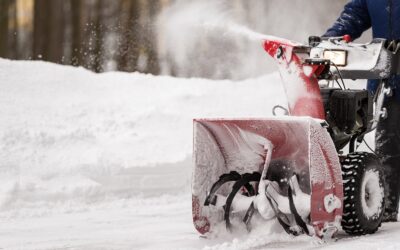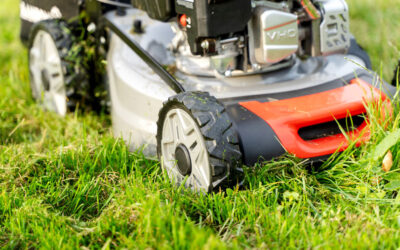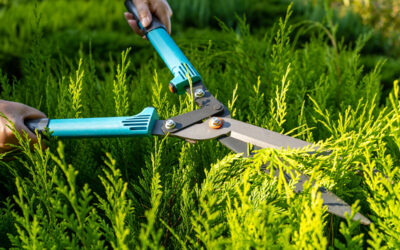If your lawn looks tired no matter how much you water and feed it, the soil might be the problem. Lawn aerating opens compacted ground so air, water, and nutrients can more easily reach the roots.
When to aerate a lawn: Aerate your lawn during its active growing season, spring or fall for cool-season grass, late spring or summer for warm-season grass.
Why should you aerate a lawn: Aeration relieves compacted soil, allowing water, air, and nutrients to reach roots for stronger, greener grass.
How to aerate a lawn: Use a core aerator to pull 2–4 inch plugs from moist soil, then leave the plugs to break down and overseed for best results.
In short, aeration is a simple, powerful way to restore a healthy, resilient lawn.
What Is Lawn Aerating?
Aeration utilizes a machine to pull small patches of soil (plugging or “core” aeration). Those perforations relieve pugging and create access to let in water and fertilizers. Uprooted plugs will eventually break down topward and assist in thinning thatch.
Spike installs mere pound metal tines into the ground without cutting an object. They're good when you're looking to do a quick spot repair, but they won't relieve pressure as a core aerator will.
How Lawn Aeration Improves Your Grass
- Relaxes compaction to allow roots to develop further
- Mitigates runoff and puddling and encourages water infiltration
- Increases fertilizer efficiency by delivering into the root zone
- Promotes heavier thatch and heavier drought and heat tolerance
- Reduces thatch as it is degraded by soil microbes
- Prime sites for overseeding, as the seed dropped into holes touch the ground
When to Aerate a Lawn (By Grass Type)
Time it for active growth so turf recovers quickly.
- Cool-season grasses (tall fescue, Kentucky bluegrass, perennial ryegrass): Early fall is best; spring is a solid second choice.
- Warm-season grasses (Bermuda, Zoysia, St. Augustine): Late spring into early summer when growth is strongest.
Avoid deep freezes, peak summer heat, and drought stress. Soil should be moist, not muddy, for clean, deep plugs.

How to Aerate a Lawn: Step-by-Step
- Watered the day before – Target to have evenly moist soil so tines come away 2–4 inch plugs.
- Crop a notch below – Lower blades prevent the snatching of the machine.
- Flag hazards – Indicate sprinkler heads, shallow lines, low-voltage lights, and hidden pet fences.
- A core aerator – Perform a complete pass followed by a subsequent pass from a 45–90° angle to improve coverage. Include a third pass in tight areas.
- Leave the plugs – Rain and mowing will break them down, free topdressing that nourishes microbes.
- Overseed (optional but smart) – After aerating a lawn, broadcast seed so it drops into holes. A thin compost topdressing improves seed-to-soil contact.
- Fertilize sparingly – Starter fertilizer is good for new roots if you overseed; be light if you fed lately.
- Water regularly – Maintain even moisture on the surface for 10–14 days when sowing; otherwise, resume your regular routine.
- Restrict traffic for a week or fortnight – Allow roots to interlace back.
Core vs. Spike Aerators: Which Is Best for Lawn Aerating?
- Core/plug aerators: Remove soil, relieve compaction, open channels, best choice for most lawns.
- Spike tools: Push holes without removing soil; can increase compaction in dense or clay soils. Use only for light, temporary touch-ups.
How Often Should You Aerate a Lawn?
- Clay or high-traffic lawns: annually (Conditions twice as much if compaction occurs sooner)
- Normal residential lawns: annually or 1–2 times
- Sandy or light-traffic driveways: 2–3
Good culture practice, proper mowing height, comparable feeding, proper watering, and regular compost topdressing let you space the time between.
5 Signs You Should Aerate Your Lawn
1. Runoff or leaks through instead of soaking into it
2. The ground is hard; it is difficult to push a screwdriver into it
3. Bald patches, even when watered and fertilized
4. Thick thatch layer (roughly ½ inch or thicker)
5. Pedestrian traffic from children, pets, or mowers that never patches itself
Lawn Aeration Follow-Up: What to Expect
Week 1–2: Dirt cracks and starts to crumble; the surface may look uneven.
Week 3–4: Holes fill up; color and density recover. New young shoots (if overseeded) appear.
Month 2+: Increased root development and improved stress tolerance appear in daily mowing and watering.
The Lawn Aeration Checklist
- Differentiate species of grasses → choose the right season
- Reserve a core aerator (walk-behind or tow-behind
- Water the day before (damp but not watery)
- Sprinkle flag heads and light utilities
- Go two angled passes (third in cramped situations)
- Leave the plugs to rot
- Overseed thin areas and keep the grass frequently wet
- Resume normal mowing as recovery gains
Stronger Grass Starts with Lawn Aeration
If you only do one big lawn task this year, make it foundational core aeration. Do it during active growth when you loosen the soil by pulling 2 – 4" plugs of sod from wet ground. Then overseed bare areas. Within some weeks, you should notice deeper-rooted grass for improved color and turf that endures heat, foot traffic, and storms less problematically. Contact us at Park City Power to order an available core aerator or schedule a pickup/service.




 Search Website
Search Website